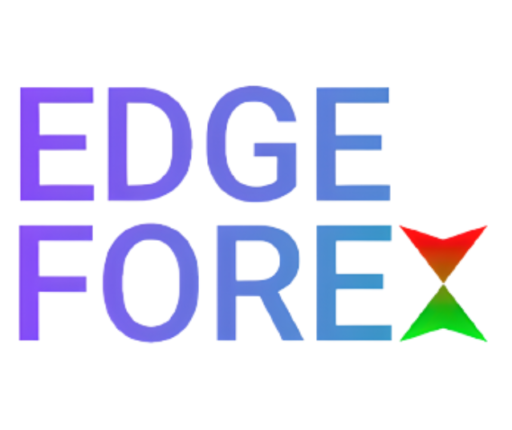
Introduction to Essential Forex Terminology
Essential Forex Terminology is not just a set of jargon or complicated words; it’s the foundation for your success in the Forex markets. Trading in the Forex market is much like learning a new language. Just like you wouldn’t travel to a foreign country without knowing some basic phrases, diving into Forex trading without understanding its terminology is a recipe for disaster. This comprehensive guide aims to serve as your go-to resource for mastering the language of Forex, thoroughly covering the essential Forex terminology you’ll need for confident trading.
Whether you are just stepping into the vast world of Forex or have been trading for years, understanding the language is crucial. Misunderstanding a single term could mean the difference between making a profitable trade and losing a significant portion of your investment. The terms, acronyms, and phrases used in Forex trading are unique, often confusing for a beginner, and sometimes even for those with experience. This guide is designed to equip you with the knowledge of key terms, their applications, and the strategy behind them, solidifying your grasp of essential Forex terminology.
By the end of this guide, you won’t just be throwing around buzzwords; you’ll have a deep understanding of what they mean and how they fit into your trading strategy. This knowledge is vital for making informed decisions, analyzing market trends, and most importantly, for trading with confidence. So let’s delve into the language of Forex and make you fluent in its terminology.
Essential Forex Jargon
Understanding essential Forex terminology is paramount for anyone who wishes to become proficient in the world of Forex trading. The language of Forex is rife with terms, acronyms, and phrases that might seem daunting to a newcomer. However, mastering these key terms opens up the door to confident trading and informed decision-making.
Bid, Ask, and Spread
These are the foundational elements of Forex trading. Let’s break them down:
Bid: This is the maximum price that a buyer is willing to pay for a currency pair. It is the rate at which you, as a trader, will sell the base currency.
Ask: Conversely, this is the minimum price that a seller is willing to accept. This rate is where you’ll buy the currency pair.
Spread: The ‘Spread’ is the difference between the ‘Ask’ and ‘Bid’ price and is usually measured in pips. Understanding the spread is crucial because it is a cost that traders have to consider when entering and exiting trades.
Understanding the interplay between these three components can help you not only in executing trades but also in developing more effective trading strategies.
Pip
The term ‘Pip’ stands for “Percentage in Point” or “Price Interest Point,” and it represents the smallest price movement in the exchange rate for a currency pair. Pips are crucial for measuring price changes and thus calculating profit and loss. Traditionally, a pip is generally equivalent to a one-digit move in the fourth decimal place of a currency pair. For example, if EUR/USD moves from 1.1150 to 1.1151, that .0001 USD rise in value represents one Pip.
Lot Size
The ‘Lot Size’ specifies the number of units in one lot. In Forex, standard lot sizes are usually 100,000 units of the base currency. Smaller lot sizes can be micro (1,000) and mini (10,000). The lot size determines the level of risk you’re taking. The larger the lot size, the greater the profit or loss with each pip movement.
Currency Pairs
Currency pairs are the cornerstone of Forex trading. A currency pair consists of a ‘base’ and a ‘quote’ currency. The base currency is what you are buying or selling against the quote currency. For instance, in the currency pair USD/EUR, the USD is the base currency, and the EUR is the quote currency.
Understanding how these currencies interact is a vital part of Forex trading, affecting everything from the choice of currency pairs to trade, the time of day you trade, and the trading strategies you employ.
Every seasoned trader knows that understanding these terms is not just helpful but crucial for confident trading. Without a solid grasp of essential Forex terminology, you’re essentially navigating a minefield without a map. Armed with these definitions and explanations, you’re one step closer to becoming a seasoned Forex trader.
Acronyms and Abbreviations
In the fast-paced world of Forex, acronyms and abbreviations are commonly used to speed up communication and simplify complex terminology. However, for new traders or even experienced ones who are not familiar with these shortcuts, they can be a source of confusion. Understanding these terms is essential for effective and confident trading. Here’s a closer look at some of these terms:
FX
When you first venture into the world of Forex trading, ‘FX’ is one of the first terms you’ll encounter. It simply stands for “Foreign Exchange,” which is the act of converting one country’s currency into another. The FX market is the largest financial market in the world, with a daily trading volume exceeding $6 trillion as of 2021. If you’re serious about diving into Forex trading, ‘FX’ is a term you’ll see and use frequently.
CFD
CFD stands for Contract for Difference. In Forex trading, CFDs allow you to speculate on the rising or falling prices of fast-moving global financial markets. Unlike traditional Forex trading where you buy and sell currency pairs, CFD trading does not involve owning the underlying asset. Instead, you trade on the price movement of the asset. CFDs offer a way to take advantage of price movements with a smaller initial capital outlay, although they also carry a higher level of risk due to leverage.
ECN
ECN is an acronym for Electronic Communications Network. An ECN broker provides a platform for traders to conduct trading activities in a way that it automatically matches buy and sell orders. This setup removes the middleman, allowing traders to trade directly with liquidity providers. ECNs are known for offering tighter spreads, which can reduce trading costs, but they often charge a commission for the services provided.
MQL
MQL stands for MetaQuotes Language. This is a programming language used predominantly with MetaTrader 4 and MetaTrader 5, popular platforms for Forex trading. MQL allows traders to create custom indicators, scripts, and automated trading algorithms, commonly known as Expert Advisors (EAs). Mastering MQL can give you greater control over your trading activities and enable you to implement more sophisticated trading strategies.
Incorporating these acronyms and abbreviations into your Forex glossary won’t just make you sound like an expert; it will help you understand the market better, streamline your trading activities, and enhance your trading strategies. By knowing what these terms mean and how they fit into the bigger picture, you’re building a robust framework for successful Forex trading.
Here is a forex trading glossary for deeper research…
Terms Unique to Forex Markets
While there are many commonalities in the jargon used across different financial markets, Forex trading has its unique set of terms. A deep understanding of these specific terms can significantly impact your trading strategies and your level of confident trading. Here are some terms unique to the Forex market:
Leverage and Margin
These two terms often go hand-in-hand and are fundamental concepts in Forex trading:
Leverage: In Forex trading, leverage is essentially borrowed capital from the broker, enabling you to open a position much larger than you could with your initial investment alone. Leverage is expressed as a ratio. For example, if your broker offers a leverage of 50:1, you can control a $50,000 position with just $1,000 of your own capital.
Margin: The ‘Margin’ is the initial deposit required to open a leveraged position. It acts as collateral for the leveraged trade. For instance, if you want to control a $100,000 position at a 100:1 leverage, you would need $1,000 as margin.
Leverage can amplify profits, but it also increases the risks and potential losses. Therefore, it’s crucial to use leverage carefully and understand the margin requirements for each trade.
Swaps
In Forex trading, a ‘Swap’ is the interest rate differential between the two currencies in a currency pair and is paid or charged depending on whether you are buying or selling the pair. If you hold a position overnight, you will either be paid or charged a “swap fee,” depending on the interest rate difference between the two currencies. Knowing the swap rates can influence your decision on whether to hold a position overnight.
Slippage
‘Slippage’ occurs when an order is executed at a worse rate than what you expected. This typically happens during times of high volatility or low liquidity. For instance, if you place a stop-loss order to sell EUR/USD at 1.1200, but due to rapid market movements, the best available price when your order is executed is 1.1180, you have experienced slippage of 20 pips.
Understanding slippage can help you manage risk and execute trades more effectively, especially during volatile market conditions.
With a good grasp of these unique Forex terms, you’re setting yourself up for more effective, efficient, and, most importantly, more confident trading. These terms may seem complicated at first glance, but understanding them is crucial for long-term success in Forex trading.
Understanding Order Types
Order types in Forex trading are like the tools in a craftsman’s toolbox—each has a specific purpose and is vital for particular trading scenarios. Utilizing the correct order type can significantly enhance your trading strategy and contribute to your long-term success. Understanding order types is essential for confident trading as they provide you with the tools you need to enter and exit the market under varying conditions. Here are some commonly used order types:
Market Order
A ‘Market Order’ is the most straightforward type of order. When you place a market order, you are asking your broker to execute your buy or sell transaction immediately at the current market price. This type of order is ideal when the priority is to execute the trade quickly rather than to get a particular entry or exit price. However, in volatile markets, the price at which a market order will be executed is not guaranteed.
Limit Order
A ‘Limit Order’ allows you to specify the price at which you want to buy or sell. The order will only be executed when the market reaches your specified price or better. This type of order is useful when you have a specific entry or exit price in mind and are not in a rush to execute the trade. It helps traders get the best possible price but carries the risk that the order may not get filled if the market doesn’t reach the specified price.
Stop Order
A ‘Stop Order’, also known as a ‘Stop-Loss Order,’ is designed to limit an investor’s loss on a position. When a currency pair reaches a certain price, the stop order becomes a market order. Stop orders are crucial for risk management, especially if you can’t monitor your account 24/7. However, like market orders, a stop order doesn’t guarantee the price of execution, particularly in volatile markets.
Forex Market Hours
Although Forex is a market that operates 24/5, not all hours are equally good for trading. Different Forex markets around the world have their own opening and closing times, and understanding these can have a significant impact on your trading strategy. For example, the overlap between the London and New York sessions sees high liquidity and is often a good time to trade. Conversely, the quiet hours might offer fewer opportunities and wider spreads.
Choosing the right order type is an essential part of creating a successful trading strategy. By understanding the pros and cons of each, you can better manage your risk and improve the overall effectiveness of your trading activities. Therefore, knowing these order types is a cornerstone of confident trading in the Forex market.
Conclusion
In Forex trading, the language you speak is almost as crucial as the strategies you employ. Grasping the essential Forex terminology is not merely an academic exercise; it’s a practical necessity for anyone looking to trade confidently and effectively. Through this guide, we’ve demystified key terms, acronyms, and unique jargon in the world of Forex. We’ve taken you through the ABCs, from understanding the basic ‘Bid,’ ‘Ask,’ and ‘Spread,’ to more intricate terms like leverage and margin, and various order types.
Understanding terms like “Currency Pairs,” “Leverage and Margin,” and “Forex Market Hours” is not just about becoming fluent in the language of Forex. It’s about equipping yourself with the tools needed to make informed decisions, manage risks effectively, and ultimately, succeed in the trading world. It’s about laying the groundwork for strong, confident trading strategies that go beyond mere speculation.
Whether you are a seasoned trader looking to brush up on your terminology or a beginner taking your first steps into the Forex world, a solid grasp of these terms is invaluable. Remember, knowledge is power, and in the world of Forex, it can be the key that unlocks a myriad of trading opportunities.
So go ahead, take this newfound knowledge, and use it to navigate the often complex but immensely rewarding world of Forex trading. With your understanding of essential Forex terminology, you’re not just speaking the language—you’re living it. And that makes all the difference when you’re aiming for success in the trading world.
Visit our website for more resources on forex trading…
FAQs
What is a Pip in Forex trading? A Pip is the smallest price move that a given exchange rate can make. It’s a standardized unit of measurement for currencies and is important for calculating profit and loss.
How does leverage work in Forex? Leverage allows you to control a large position with a smaller amount of your own capital. It’s expressed as a ratio, like 50:1, meaning you can control a $50,000 position with just $1,000.
What is a margin call? A margin call occurs when the value of your trading account falls below the broker’s required margin level. You’ll need to deposit more funds or close out positions to meet the margin requirements.
What are currency pairs? A currency pair consists of a base and a quote currency (e.g., USD/EUR). You’re essentially buying one currency while selling the other.
What’s the difference between a market order and a limit order? A market order is executed immediately at the current market price, while a limit order is placed at a specific price or better and may not be executed immediately.
What is a stop order? A stop order becomes a market order once a pre-defined price is reached. It’s used to limit losses or to secure profits.
What are Forex Market Hours? The Forex market operates 24/5, starting from Sunday evening until Friday evening. However, not all hours are equally liquid or volatile.
What is slippage? Slippage occurs when an order is executed at a different price than expected, usually during high volatility or low liquidity.
What is a swap in Forex? A swap is the interest rate differential between the two currencies in a pair. You either earn or pay this differential if you hold a position overnight.
Is understanding Forex terminology essential for trading? Absolutely, understanding Forex terminology is crucial for making informed decisions, managing risk, and trading confidently.


